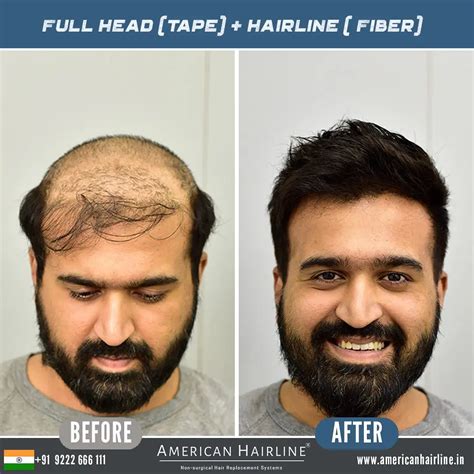Hair Loss: A Growing Concern
According to the American Hair Loss Association, over 50% of men will experience significant hair loss by the age of 50. This statistic highlights the growing prevalence of hair loss among males.

Causes of Hair Loss in Men
The most common cause of hair loss in men is androgenetic alopecia, commonly known as male pattern baldness. This condition is caused by a genetic predisposition and an oversensitivity to a hormone called dihydrotestosterone (DHT). DHT shrinks hair follicles over time, leading to thinner and shorter hair.
Other causes of hair loss in men include:
- Alopecia areata: An autoimmune disorder that causes patchy hair loss
- Telogen effluvium: Hair loss due to stress, illness, or medication
- Traction alopecia: Hair loss caused by tight hairstyles
Hair Replacement Options for Men
With advancements in medical technology, various hair replacement options are available for men. Each method offers unique advantages and drawbacks.
1. Minoxidil
Minoxidil is an FDA-approved topical medication that helps stimulate hair growth. It is applied directly to the scalp and can be effective in slowing down hair loss and promoting regrowth. However, it requires consistent use and may not be suitable for everyone.
2. Finasteride
Finasteride is another FDA-approved medication that inhibits the production of DHT. By blocking DHT, it helps prevent further hair loss and may even promote some regrowth. Like minoxidil, it requires long-term use for optimal results.
3. Hair Transplants
Hair transplants involve surgically removing hair follicles from one part of the scalp (donor area) and implanting them into the thinning or balding areas (recipient area). This procedure can be expensive and time-consuming but provides permanent results.
4. Non-Surgical Hair Replacement
Non-surgical hair replacement methods include:
- Wigs: Artificial hairpieces that can be worn to cover thinning hair or bald spots.
- Toupees: Similar to wigs, but smaller in size and designed to cover specific areas of hair loss.
- Hair extensions: Strands of hair attached to natural hair to add volume and length.
Choosing the Right Hair Replacement Option
The best hair replacement option for you depends on several factors, such as:
- Extent of hair loss
- Age and overall health
- Lifestyle and budget
- Desired results
It’s crucial to consult with a qualified hair loss specialist to determine the most appropriate treatment for your individual needs.
Common Mistakes to Avoid
When considering hair replacement, avoid these common mistakes:
- Choosing unrealistic expectations: Hair replacement cannot restore your hair to its original condition. Be realistic about the results you can expect.
- Ignoring underlying health issues: If your hair loss is caused by an underlying medical condition, it’s essential to address it before pursuing hair replacement.
- Neglecting proper maintenance: Hair replacement requires regular cleaning, styling, and maintenance to look its best and last longer.
- Ignoring potential side effects: Medications like minoxidil and finasteride may have potential side effects that should be discussed with your doctor.
Frequently Asked Questions
1. What are the long-term costs of hair replacement?
The cost of hair replacement varies depending on the method chosen. Minoxidil and finasteride are relatively inexpensive, while hair transplants can be costly. Non-surgical hair replacement options fall somewhere in between.
2. How long does hair replacement last?
The longevity of hair replacement depends on the type of procedure. Hair transplants provide permanent results, while non-surgical options require ongoing maintenance and replacement.
3. Is hair replacement painful?
Hair transplants involve some surgical intervention, which may cause discomfort during and after the procedure. However, non-surgical hair replacement methods are typically painless.
4. Who is a good candidate for hair replacement?
Men who are experiencing significant hair loss, are healthy enough for surgery (if necessary), and have realistic expectations are good candidates for hair replacement.
5. Can hair replacement affect my self-esteem?
Hair replacement can have a positive impact on self-esteem by restoring confidence and improving appearance. However, it’s important to remember that your worth is not determined by your hair.
6. What advances are there in hair replacement technology?
Emerging technologies, such as stem cell research and 3D printing, offer promising advancements in hair replacement. These innovations may provide more effective and personalized solutions in the future.
